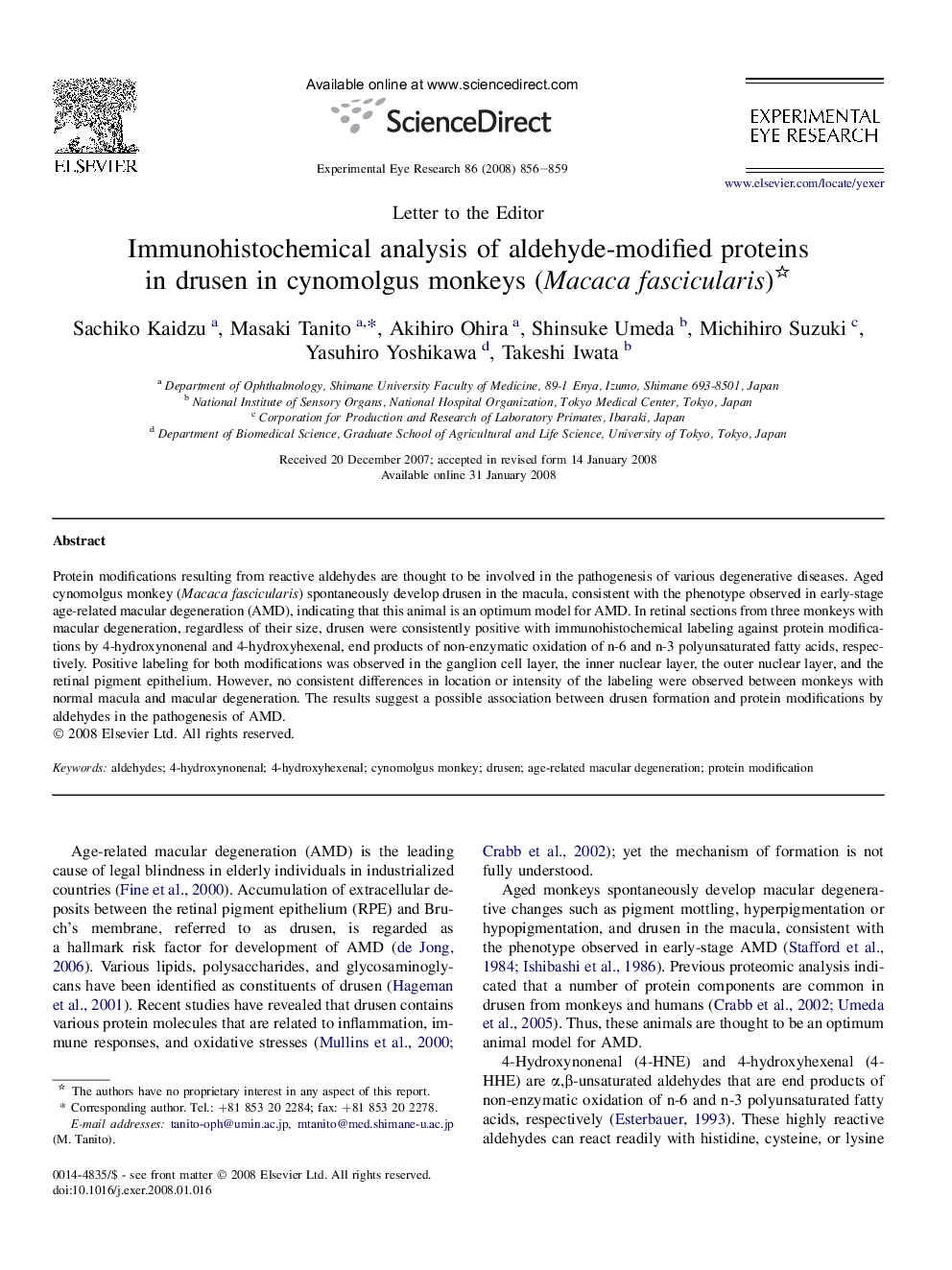| Article ID | Journal | Published Year | Pages | File Type |
|---|---|---|---|---|
| 4012188 | Experimental Eye Research | 2008 | 4 Pages |
Abstract
Protein modifications resulting from reactive aldehydes are thought to be involved in the pathogenesis of various degenerative diseases. Aged cynomolgus monkey (Macaca fascicularis) spontaneously develop drusen in the macula, consistent with the phenotype observed in early-stage age-related macular degeneration (AMD), indicating that this animal is an optimum model for AMD. In retinal sections from three monkeys with macular degeneration, regardless of their size, drusen were consistently positive with immunohistochemical labeling against protein modifications by 4-hydroxynonenal and 4-hydroxyhexenal, end products of non-enzymatic oxidation of n-6 and n-3 polyunsaturated fatty acids, respectively. Positive labeling for both modifications was observed in the ganglion cell layer, the inner nuclear layer, the outer nuclear layer, and the retinal pigment epithelium. However, no consistent differences in location or intensity of the labeling were observed between monkeys with normal macula and macular degeneration. The results suggest a possible association between drusen formation and protein modifications by aldehydes in the pathogenesis of AMD.
Keywords
Related Topics
Life Sciences
Immunology and Microbiology
Immunology and Microbiology (General)
Authors
Sachiko Kaidzu, Masaki Tanito, Akihiro Ohira, Shinsuke Umeda, Michihiro Suzuki, Yasuhiro Yoshikawa, Takeshi Iwata,
